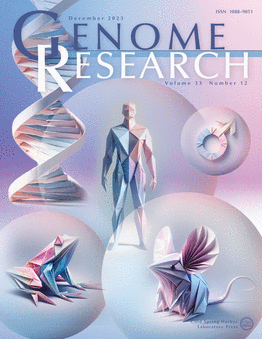TFcomb 基于单细胞多组学数据识别细胞重编程的转录因子组合
IF 6.2
2区 生物学
Q1 BIOCHEMISTRY & MOLECULAR BIOLOGY
引用次数: 0
摘要
重编程细胞状态转换为许多疾病的细胞工程和再生治疗提供了潜力。寻找重编程转录因子(TFs)和它们的组合,可以指导所需的状态转换是至关重要的任务。已经开发了计算方法来识别这种重编程tf。然而,大多数方法只能生成单个TF的排序列表,而忽略了TF组合的识别。即使对于单个重编程TF的识别,当前的方法也常常不能将真正有效的重编程TF放在排名的首位。为了应对这些挑战,我们开发了TFcomb,这是一种利用单细胞多组学数据来识别可指导细胞状态转变的重编程TF和TF组合的计算方法。我们将寻找重编程tf及其组合的任务建模为一个逆问题,以便在非常高维空间中搜索答案,并使用Tikhonov正则化来保证解的泛化能力。对于模型的系数矩阵,我们设计了一个图关注网络来增强单细胞RNA-seq和ATAC-seq数据构建的基因调控网络。对人胚胎干细胞数据的基准实验表明,TFcomb与现有的单个tf识别方法相比具有优越的性能。我们整理了多个细胞重编程案例的数据集,并证明TFcomb可以有效地从大量潜在组合中识别重编程TF组合。我们将TFcomb应用于小鼠毛囊发育数据集,发现了细胞分化的关键tf。所有实验表明,TFcomb在识别单细胞数据集的重编程TF和TF组合方面功能强大,为未来的细胞工程提供了支持。本文章由计算机程序翻译,如有差异,请以英文原文为准。
TFcomb identifies transcription factor combinations for cellular reprogramming based on single-cell multiomics data
Reprogramming cell state transitions provides the potential for cell engineering and regenerative therapy for many diseases. Finding the reprogramming transcription factors (TFs) and their combinations that can direct the desired state transition is crucial for the task. Computational methods have been developed to identify such reprogramming TFs. However, most of them can only generate a ranked list of individual TFs and ignore the identification of TF combinations. Even for individual reprogramming TF identification, current methods often fail to put the real effective reprogramming TFs at the top of their rankings. To address these challenges, we developed TFcomb, a computational method that leverages single-cell multiomics data to identify reprogramming TFs and TF combinations that can direct cell state transitions. We modeled the task of finding reprogramming TFs and their combinations as an inverse problem to enable searching for answers in very high dimensional space, and used Tikhonov regularization to guarantee the generalization ability of solutions. For the coefficient matrix of the model, we designed a graph attention network to augment gene regulatory networks built with single-cell RNA-seq and ATAC-seq data. Benchmarking experiments on data of human embryonic stem cells demonstrated superior performance of TFcomb against existing methods for identifying individual TFs. We curated datasets of multiple cell reprogramming cases and demonstrated that TFcomb can efficiently identify reprogramming TF combinations from a vast pool of potential combinations. We applied TFcomb on a dataset of mouse hair follicle development and found key TFs in cell differentiation. All experiments showed that TFcomb is powerful in identifying reprogramming TFs and TF combinations from single-cell datasets to empower future cell engineering.
求助全文
通过发布文献求助,成功后即可免费获取论文全文。
去求助
来源期刊

Genome research
生物-生化与分子生物学
CiteScore
12.40
自引率
1.40%
发文量
140
审稿时长
6 months
期刊介绍:
Launched in 1995, Genome Research is an international, continuously published, peer-reviewed journal that focuses on research that provides novel insights into the genome biology of all organisms, including advances in genomic medicine.
Among the topics considered by the journal are genome structure and function, comparative genomics, molecular evolution, genome-scale quantitative and population genetics, proteomics, epigenomics, and systems biology. The journal also features exciting gene discoveries and reports of cutting-edge computational biology and high-throughput methodologies.
New data in these areas are published as research papers, or methods and resource reports that provide novel information on technologies or tools that will be of interest to a broad readership. Complete data sets are presented electronically on the journal''s web site where appropriate. The journal also provides Reviews, Perspectives, and Insight/Outlook articles, which present commentary on the latest advances published both here and elsewhere, placing such progress in its broader biological context.
 求助内容:
求助内容: 应助结果提醒方式:
应助结果提醒方式:


